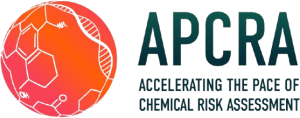
Transcriptomics-based points of departure for ecotoxicology – investigating the applicability of high throughput transcriptomics data to inform quantitative hazard assessments for ecological species
Case Study Leader: US EPA (Dan Villeneuve)
Overall goal/objectives: The overall goal of this case study is to test the hypothesis that concentration-response modeling of whole organism transcriptomic response following a 24 h exposure to larval fathead minnows (24-48 h post-hatch) can provide point of departure estimates that are protective, but not overly conservative, relative to acute and chronic toxicity measured in…

Retrospective Case Study Examining the Utility of In Vitro Bioactivity as a Conservative Point of Departure
Case Study Leader: US EPA (Katie Paul Friedman), ECHA (Tomasz Sobanski)
Overall goal/objectives: To elucidate whether a “region of safety” (ROS), i.e. a threshold below which no bioactivity or toxicity would be anticipated, can be identified using NAMs for a list of chemicals with existing human health evaluations. Case Study Leader: US EPA (Katie Paul Friedman), ECHA (Tomasz Sobanski) Collaborators: US EPA (ORD), ECHA, EFSA, A*STAR Status:…

Use of transcription profiles and primary human liver cells grown as spheroids to address potency and additivity of perfluorinated alkylated substances: Applications for read-across and additivity in risk assessment of emerging PFAS
Case Study Leader: Health Canada (Ella Atlas)
Overall goal/objectives: Use of high-throughput, in vitro bioactivity data in setting a point-of-departure (POD) has the potential to accelerate the pace of human health safety evaluation by informing screening-level assessments. The primary objective of this work was to compare PODs based on high-throughput predictions of bioactivity, exposure predictions, and traditional hazard information for 448 chemicals.…

Evaluation of the zebrafish (Brachydanio rerio) model as an early life stage whole organism model NAM that serves as an alternative to rodent assays for validating in vitro assays in the assessment of chemicals for general toxicity and endocrine disruption
Case Study Leader: Health Canada (Joëlle Pinsonnault Cooper, Jean Grundy, Lee Ellis)
Overall goal/objectives: In 2018 the Government of Canada began researching the potential of the zebrafish (ZF) embryo and larva as whole organism models to 1) evaluate endocrine disruption beyond developmental effects and 2) as an alternative to the 28-day rodent assay for general toxicity assessments, thereby facilitating the 3Rs of reduction, refinement and replacement of…

A NAM-Based Integrated Approach for Screening Potential Genotoxic Chemicals
Case Study Leader: Health Canada (Marc Beal)
Overall goal/objectives: The overall goal of the project is to critically evaluate genetic toxicology NAMs and determine how in vitro to in vivo extrapolation (IVIVE) could be applied to these data to support human health risk assessment. Recently, genetic toxicology data from various endpoints (mutagenicity, aneugenicity, clastogenicity, DNA damage response elements) has been provided by…

NAM-based hazard assessment of nanofibres: gastrointestinal digestion, uptake and local effects of nanocellulose
Case Study Leader: ISS-IT (Francesco Cubadda)
Overall goal/objectives: The goal of this EFSA-funded project was to assess the capacity of NAMs for addressing the gaps identified in risk assessments for nanofibers used in the food/feed area, particularly nanocellulose. Complements a parallel OECD activity on “Integrated in vitro approach for intestinal fate of orally ingested nanomaterial” that focuses on metallic nanoparticles. The…

Substantiating Chemical Categories with Omics-derived Mechanistic Evidence (SuCCess)
Case Study Leader: ECHA & University of Birmingham (Mark Viant)
Overall goal/objectives: Grouping and read-across are frequently used for human health and environmental endpoints. The quality of this hazard assessment methodology, however, needs to improve as registrants often do not provide enough scientific evidence to support their read-across case. Critical to the robustness of a ‘read-across’ prediction is the formation of a group (or category)…

Revisiting and updating chemical categorizations with new approach methods (NAMs)
Case Study Leader: US EPA (Dan Chang)
Overall goal/objectives: To integrate and utilize NAM-based data streams for chemical category development and to refine existing chemical categories used by both ecological and human health risk assessors. The primary objective is to identify new potential chemical groupings through their prediction with a developed consensus mode-of-action model. Secondary focus is to integrate the model with…
